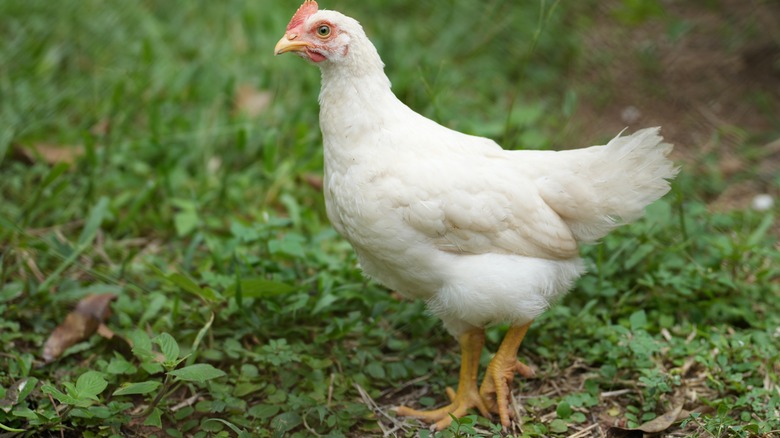The Ancient Yom Kippur Tradition Of Chicken Twirling
For many Jews worldwide, the high holiday of Yom Kippur — known as one of the Jewish high holy days, or specifically the day of atonement — is considered one of the most important of the year. In the days leading up to and during Yom Kippur, Jews engage in a number of activities to repent for personal and collective sins, as well as to apologize to friends, loved ones, and those within their community. One of the most well-known ways is fasting; Jews begin fasting at sundown the evening of Yom Kippur and do so until sunset the next day, when they break the fast with a festive meal. Observant Jews of all denominations spend the day in synagogue, engaged in prayer and the airing of their confessions. Many Jews also wear white as a symbol of purity. And, in some limited circles, they perform an ancient ritual known as kapparot, which involves swinging a chicken or rooster overhead three times before its slaughter.
This hotly debated practice, which is performed on either the day before (or the afternoon before) Yom Kippur, is intended to pass the sins of the individual performing the rite to the chicken. It is not known exactly when kapparot was first performed; the ritual is not part of widespread Jewish practice, and by and large does not appear in biblical texts (like the Torah) or post-biblical texts (like the Talmud). The first written mention of the practice of kapparot dates back to the ninth century; since is inception, per MyJewishLearning, scholars have derided it as an adoption of non-Jewish pagan folk ritual. While kapparot as a ritual has continued until today, so too has backlash against it.
Using coins instead of the chicken for kapparot
Today, kapparot (which translates to "atonements" in English) is conducted primarily by some segments of insular and deeply religious Orthodox Jewish communities and sects. It also comes with some controversy: For many, the biggest concern over kapparot is its cruelty to the chickens and roosters.
Many Jewish organizations and animal rights groups have tried to abolish the ceremony, or encourage those who perform it to use a substitute or proxy instead of chickens. These critics point to the calls for compassion for animals throughout the Torah, including the insistence that animals share the same Sabbath, the day of rest, as humans. Those who perform the ritual often donate the chickens, once they have been slaughtered, to charity — but that has not assuaged critics. Some circles, who want to maintain the tradition but also want to spare the animals harm, have suggested symbolic alternatives — like using coins in an amount equivalent to the value of the animal, putting them in a cloth, and circling it around their heads, as the Jewish Journal outlined in an op-ed in 2018.
Still, it is the more widely-practiced rituals of Yom Kippur that allow Jews of all denominations to atone and repent. It also good to keep in mind that, while a somber day, it is also a day of celebration, ending with the joyous blast of a shofar, a horn-shaped instrument, and a meal of bagels, lox and other dairy fixings.

